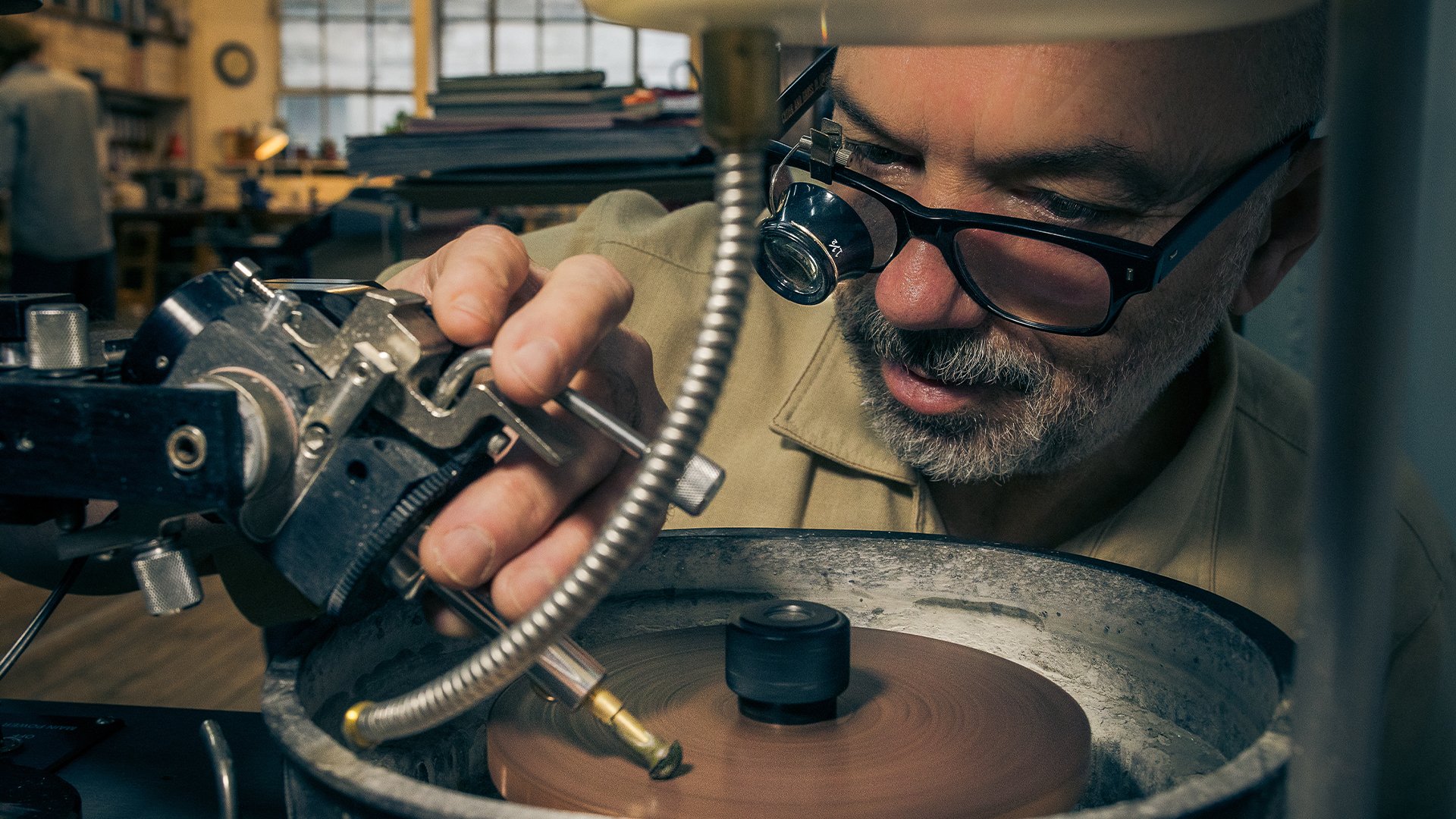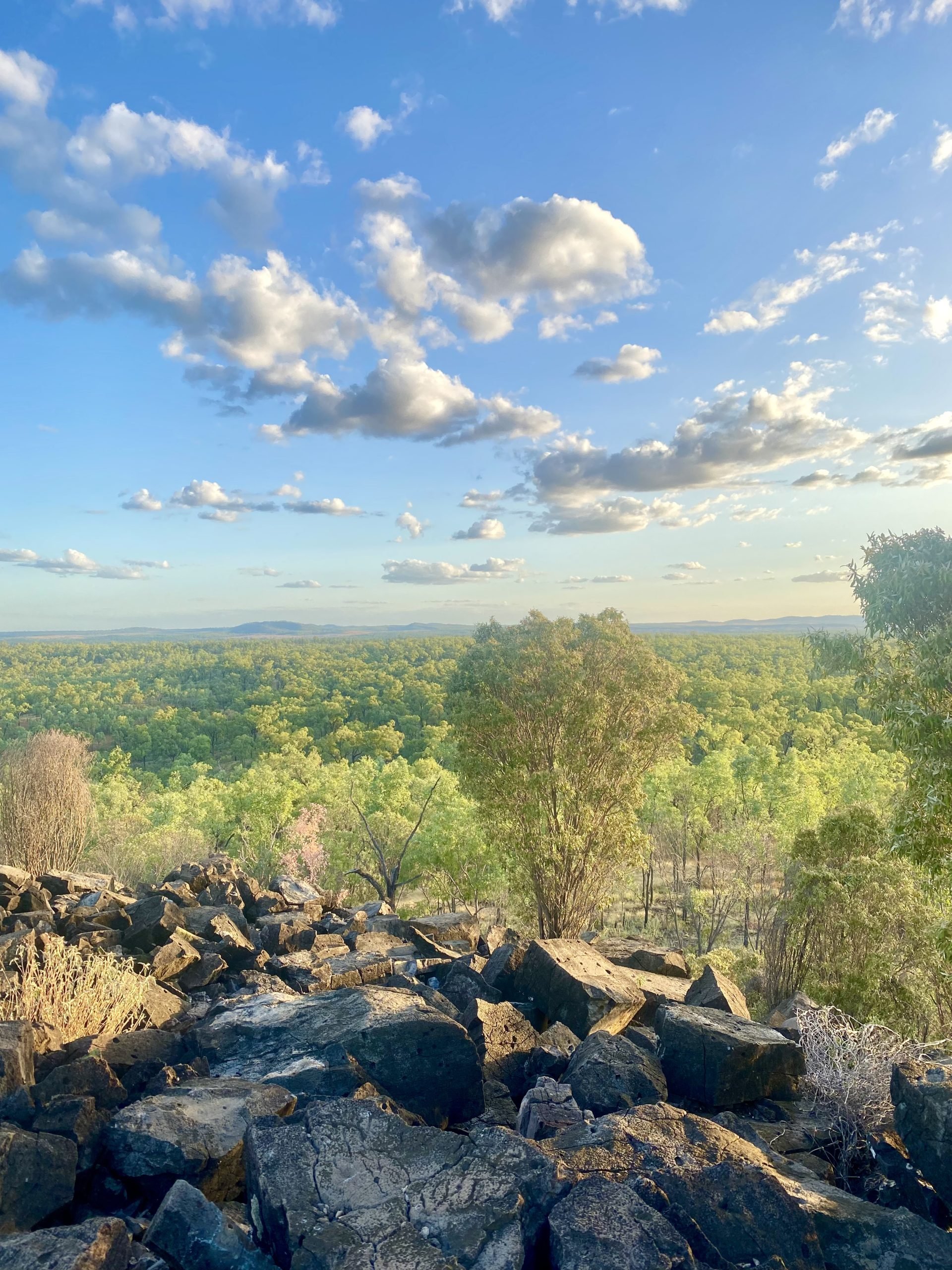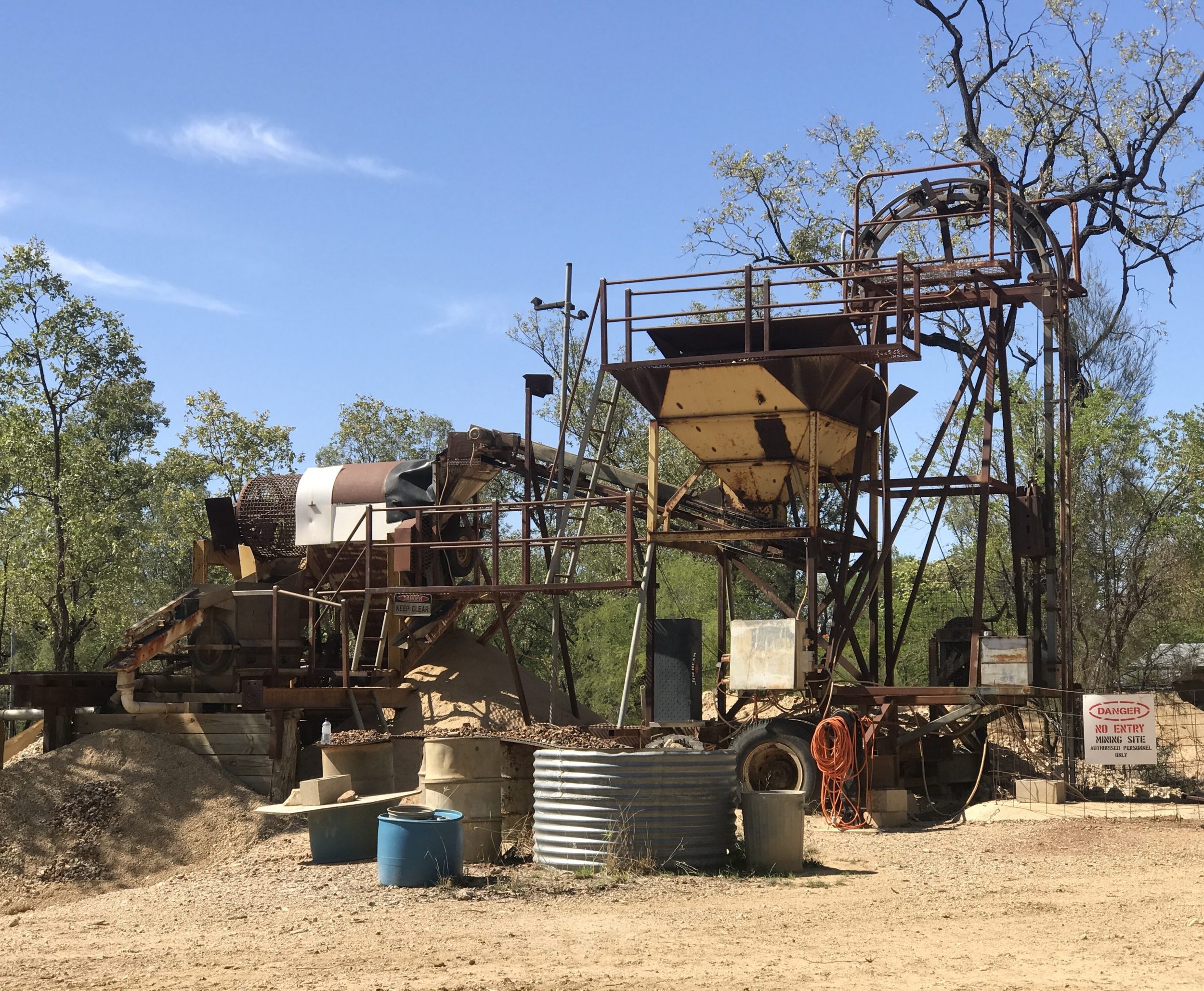Mark Nuell: Passion, dedication, and stunning gemstones
Mark Nuell, comes from a background of drive, commitment, and quiet determination. For Goldsmiths’ Stories, Janice Hosegood talks with the internationally renowned jeweller and gem cutter about his unconventional upbringing, distinctive style, and unique approach to working with gemstones.
One of my favourite speeches was delivered by Tim Minchin at the University of Western Australia in 2013. Speaking to a group of 225 graduates, each receiving their degrees, and about to embark upon their next great adventure he concluded:
“Life will sometimes seem long and tough and, God, it’s tiring. And you will sometimes be happy and sometimes sad. And then you’ll be old. And then you’ll be dead. There is only one sensible thing to do with this empty existence, and that is: fill it. FILL. IT. It’s an incredibly exciting thing, this one, meaningless life of ours.”
Having collaborated with artists and makers for several decades, I’ve seen this resolute determination manifest in many ways. I hold boundless admiration for those who have the drive and commitment to start their own businesses, fearlessly embracing the inherent risks. Most of them acknowledge that this path is the key to unleashing their true creativity and living life on their own terms.
Mark Nuell, comes from a background of this quiet determination. A jeweller and gem cutter, Mark is known internationally for his distinctive style, incredible talent and unique approach to working with gemstones.
From an early age, Mark’s upbringing deviated from the conventional norms. Between 1947 and 1981, over a million Britons emigrated to Australia. Many of them opted for the ten-pound assisted passage scheme, generously funded by both the British and Australian governments. Various motivations drove their choices: some wanted to escape the lingering post-war austerity, while others were enticed by the allure of a warmer climate and a more outdoor lifestyle, and many simply craved the thrill of embarking on a new adventure. In May 1963, Mike and Shirley Nuell, accompanied by their two young children, plus one on the way, began their transformative journey to Australia.
The family’s early years in Australia were not easy, but Mike worked hard in his job for an oil refinery and gradually improved their living conditions with a home of their own. He loved the Australian bush and enjoyed fossicking for garnets, opals and chalcedony. When he learned of sapphire finds at the Central Queensland Gemfields, he and the family packed themselves off for a long holiday road trip which eventually found them in Rubyvale. Mark’s father quickly realised that he had found his calling and that he had not travelled to the other side of the world to be in yet another mundane job. Within six months, the family had moved permanently to their new life, with Mike establishing himself as a skilled and successful sapphire miner, with a career that spanned more than 30 years.
These early years were transformative for the young Mark Nuell: “I spent many happy days accompanying my dad to his mine site. I have memories of collecting little coloured sapphires that were shining on the surface of the ground, especially after rain. I kept them in an old sweet tin.” At the age of fifteen, Mark started to learn to cut and polish sapphires with some highly skilled local gem cutters. “It was like an unofficial apprenticeship and within a year, I was working full time cutting sapphires for the local miners’ gem collections.”
In his early twenties and by this time, with a solid grounding in traditional stonecutting, Mark took himself off to the bright lights of Sydney to study jewellery making and design. Upon graduation, and with the urge to travel clearly in his blood, Mark made the long journey to London in 1990, selling his stone cutting equipment to fund his passage.
He soon established himself and his jewellery practice in London and became a regular exhibitor with Electrum Gallery, where he and I first met. “After cutting sapphires for seven years, jewellery seemed the natural progression” Mark says. “I loved going to art college which opened my eyes to lots of new ideas and new ways of looking at jewellery design. I discovered a love for ancient Greek and Roman jewellery. I also began using gems which were only cabochons and bought them already cut. I loved the colours of pink and green tourmalines, rainbow moonstones and aquamarines. After quite a few years I started to think about sapphires again and began using these wonderful stones in my work. I think for a while I did not fully appreciate these incredible stones that I had once worked with at the mines in Rubyvale.”
His jewellery sold well and quickly gathered the admiration it deserved. His use of more unusual stones gave his work its distinctive edge and he opened my eyes to the beauty of the rarer colours of the stones he used. Through Electrum, I was able to exhibit Mark’s jewellery with its incredible range of yellow, green and bi-coloured Australian sapphires and share the same appreciation to clients that Mark had taught to me.
A huge change for Mark came in 2017 after the death of his father. Mark’s mother Shirley wanted to give him a gift in memory of Mike so without hesitation, Mark asked for a stone cutting machine. “I was instantly reconnecting with gem cutting after 35 years” Mark said, “and able to develop my own unique style of faceting.” Mark was known for a distinctive style of jewellery but knew he could elevate it further by creating his own facetted stones. He was a great admirer of the German stone cutter, Bernd Munsteiner, and saw that it was possible to work outside of traditional conventions.
“My 30 years’ experience as a goldsmith has helped me to look at gem cutting from a different perspective. I know what the design possibilities are when cutting a stone in a unique way. I realised that my different approach to cutting gems would enhance my jewellery.”
In the world of lapidary and gem cutting there are rules – stones are cut in a conventional way with traditional shapes – which Mark was taught and mastered in his early years. Teaching methods tell us there is a formula to bring the best out of a gem, with faceting angles and shapes. “I am enjoying breaking all these rules and seeing the fabulous results” Mark tells me, with clear glee. “With my knowledge of stone cutting equipment I am able to use my faceting machine more like a tool to sculpt the gem, rather than be restrained by traditional cutting methods – sometimes cutting a gem with 155 facets or more instead of the usual 58 facets on a standard cut.”
Mark has a continued connection to his childhood home of Rubyvale – a small town in Queensland, Australia, known for its gemstone mining industry and sapphires of rich colours. The region’s sapphire mining history dates to the late 1800s, and to this day, it is a popular destination for tourists and gemstone enthusiasts seeking to explore the mines and buy unique sapphires.
The miners at Rubyvale work as individuals or groups and come from a variety of backgrounds. They include local people, small-scale mining operations, and even tourists who wish to try their hand at fossicking. Rubyvale’s sapphire mining industry is characterized by a mix of experienced miners and newcomers who are attracted by the allure of finding valuable gemstones, a diverse community of people who contribute to the mining heritage and economy of the area. In recent years, larger scale international mining companies have joined them.
Mark’s bond with Australia remains strong. “My mum and sister live there still and each year we return to Rubyvale to catch up with friends” Mark explains. “I meet up with the miners, some who we have known since the days of my dad mining. I love returning to this place. It’s a unique way of life and you can still go out in the bush and meet up with the locals. The place is full of characters who have built their own place to live on the claim where they mine.”
One such character, an old friend of Mark’s father, is ‘Swiss Manfred’. Typical of the solitary miners of Rubyvale, he is of indeterminate age, with a sun beaten, strong wiry frame. He inhabits approximately one acre of land where his claim is based, and long ago sunk a 30-foot shaft, giving him access to a series of tunnels which were first dug in search of gemstones around 100 years ago. Access to the mine is via a skimpy steel ladder which descends into blackness and on his last trip, Mark tentatively followed Manfred down into the dark shaft.
Manfred has been excavating underground for many years, following the traces of old seams, joining up old tunnels precariously supported with timbers. Once underground, the tunnels are well lit – much to Mark’s relief after the scary descent. Manfred’s work is accompanied by a mixture of loud rock music from the 1960s and ‘70s, echoing from a dust-covered sound system: Led Zeppelin for when he’s hard at it, then perhaps a little Pink Floyd for the more mellow moments. Mark recalls the same soundtrack from his teenage years, from trips to visit his dad Mike, and his eccentric mate.
Manfred’s claim above ground is surrounded by a landscape of 10-foot-high mounds of excavated rubble, affectionately known as Manfred’s mini-Alps. A series of metal buckets appear from the mine shaft, where they tip onto a sequence of pulsating tumbling filters. Water washes over this material and the lighter fragments are shaken off the top. This leaves the heavier stones, with the real treasure ending up in the first of many boxes. A mixture of zircon, black spinel, iron stone and small nuggets of gold sit alongside the sapphires that Manfred is working hard to find.
Mark appreciates that he’s in a unique position: “I can go to the mines and see what they have dug up over the past year and buy these rare uncut sapphires. I think my knowledge and experience, going back to those early days, helps me in sourcing the most unique pieces to bring back to London and cut in my studio.”
Throughout the year there are opportunities to visit with Mark at his London studio in London, and at Goldsmiths’ Fair, to hear the boundless enthusiasm he has for his latest find of uncut Rubyvale sapphires, and new pieces of work in progress. Mark’s knowledge and love for these incredibly special Australian gems is contagious, captivating and unforgettable – memories of seeing one of his uncut, bi-coloured sapphire in the light for the first time remain with me vividly.
Looking at the body of Mark’s work to-date, it is clear to see that he has “done the only sensible thing to do” and filled his existence, with passion, dedication, talent and stunning gemstones.
Written by Janice Hosegood | Photography by Mark Nuell and Richard Valencia









